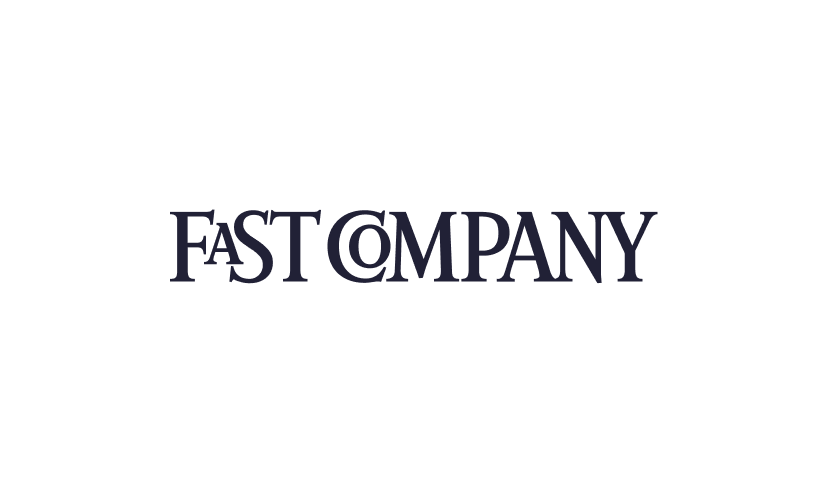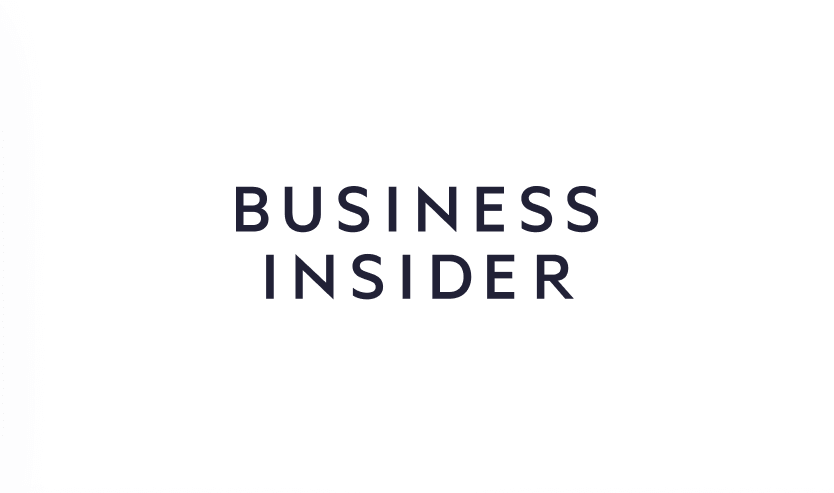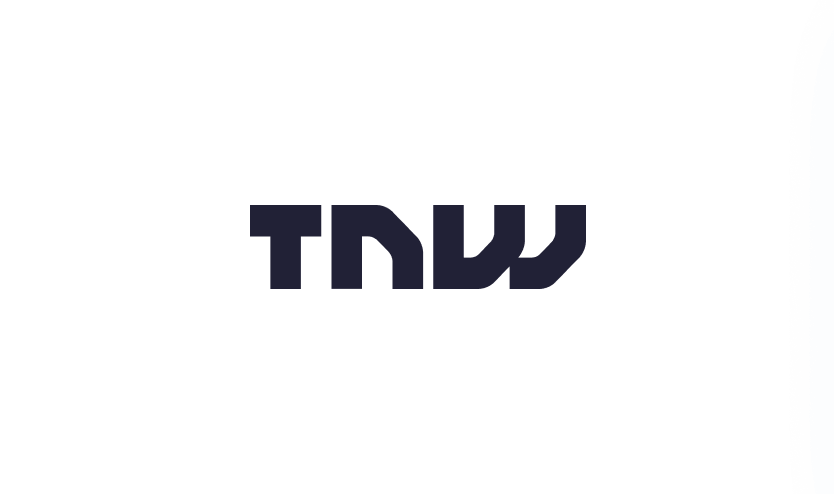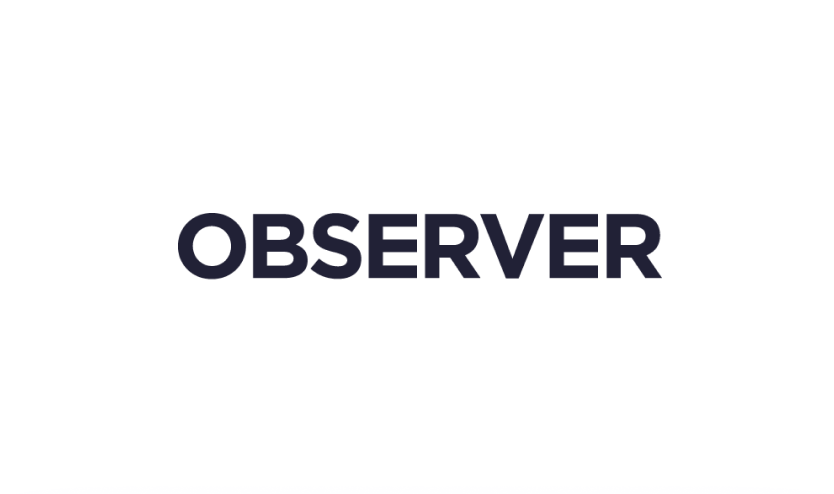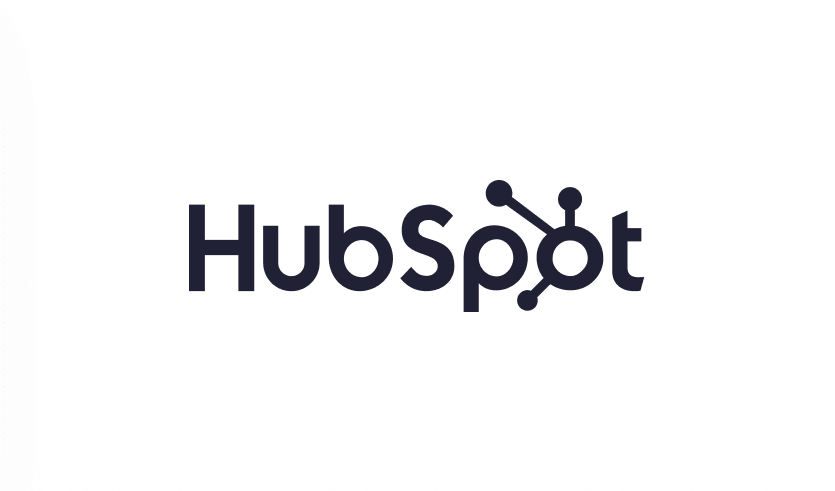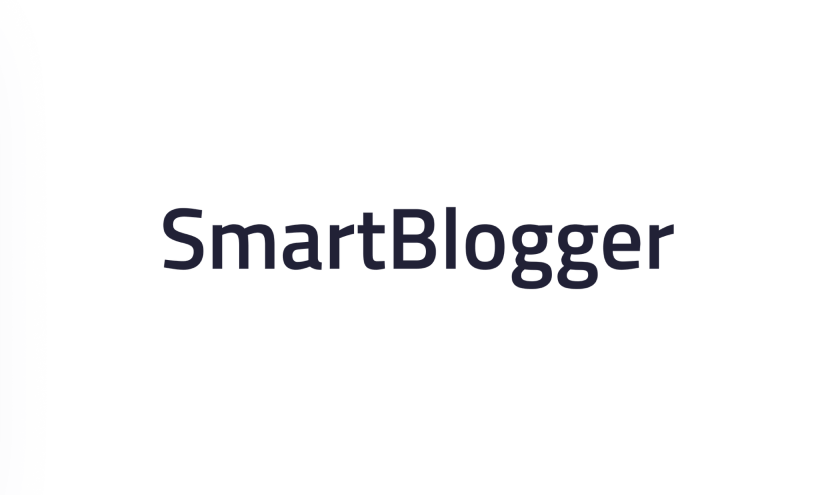Email Design Examples: 45+ Real Brand Emails Analyzed (What Works and Why)
Email design can be the difference between a campaign that gets deleted in 2 seconds and one that drives thousands in revenue. The challenge isn't finding "pretty" emails—it's understanding why certain designs convert while others fail, and how to apply those principles to your own campaigns.
The best way to learn email design isn't through theory alone—it's by analyzing what actually works in the real world, understanding the strategic decisions behind each design element, and identifying patterns that consistently drive results.
I'm Chase Dimond, and over my career managing $200+ million in eCommerce email campaigns for 7-figure, 8-figure, and 9-figure brands, I've analyzed thousands of email designs to identify what separates high performers from underperformers. The brands that win with email design aren't just following trends—they're making strategic design decisions based on their audience, goals, and data.
In this comprehensive guide, I'll break down 45+ real email design examples from top brands, analyze exactly what makes each one effective (or ineffective), and show you how to apply these lessons to your own campaigns. Plus, I'll reveal how top brands use competitive intelligence tools like Inboox.ai to analyze competitor designs and create campaigns that outperform their market.
Table of Contents
Why Study Real Email Design Examples?
The Chase Dimond Design Analysis Framework
Minimalist Email Design Examples
Product-Focused Email Design Examples
Newsletter Design Examples
Promotional Email Design Examples
Seasonal & Holiday Design Examples
Transactional Email Design Examples
Mobile-First Design Examples
Common Design Failures to Avoid
FAQ: Email Design Analysis
Why Study Real Email Design Examples?
Analyzing real email designs from successful brands provides insights you can't get from theory alone. You see actual implementation, understand trade-offs, and identify patterns that work across different industries and audiences.
Benefits of studying real design examples:
See theory in practice: How brands actually implement design principles
Identify patterns: What design elements consistently appear in high-performers
Learn from mistakes: What doesn't work and why
Adapt to your context: How to apply lessons to your specific brand
Stay current: What design trends are actually performing
Key Email Design Performance Data
First impression time: Users form opinions about email design in 0.05 seconds
Scan patterns: 80% of recipients scan emails in an F-pattern
Mobile dominance: 68% of emails are opened on mobile devices first
Design impact on trust: 75% of users judge a company's credibility based on email design
CTA visibility: Emails with clear visual hierarchy see 47% higher click-through rates
Throughout my work with 7-figure, 8-figure, and 9-figure eCommerce brands, I've found that brands who regularly analyze competitor designs and adapt winning elements outperform those who design in a vacuum by 40-60%.
Chase's Design Study Principle: "Study 10 examples before you design 1 email." The best designers aren't the most creative—they're the most informed. Analyze what's working in your industry before creating your own designs.
The Chase Dimond Design Analysis Framework
When analyzing email designs, I use a systematic framework to identify what's working and why:
The 7-Point Design Analysis System
1. First Impression (0-3 seconds)
What's the immediate visual impact?
Is the main message clear instantly?
Does it command attention or blend in?
2. Visual Hierarchy
Where does your eye go first, second, third?
Is the primary CTA obvious?
Is the information architecture logical?
3. Mobile Experience
Does it work on small screens?
Are touch targets large enough?
Does text remain readable?
4. Brand Consistency
Is it recognizably the brand?
Do colors, fonts, and style align?
Does it feel professional or amateur?
5. Conversion Elements
How many CTAs? Are they clear?
Is there urgency or scarcity?
Are friction points addressed?
6. Content Balance
Text-to-image ratio appropriate?
Is there too much or too little?
Does it respect attention span?
7. Technical Execution
Will it render properly across clients?
Are images optimized?
Is the code clean?
The Chase Dimond Design Score Method: Rate each of the 7 elements on a 1-10 scale. Designs scoring 50+ (average 7+) consistently outperform. Designs scoring below 35 (average 5) need fundamental improvements. Use this to objectively evaluate your own designs.
Minimalist Email Design Examples
Minimalist designs strip away everything non-essential, focusing attention on the core message and action.
Example 1: The Text-Only Personal Email
Brand Type: B2B SaaS, Coaching, Consulting
Design Analysis:
From: Founder Name <[email protected]>
Subject: Quick thought on [relevant topic]
──────────────────────────
Hey [First Name],
[3-4 short paragraphs of conversational,
valuable content - feels like a personal email
from a friend or colleague]
[Clear next step with simple text link]
Best,
[Name]
[Title]
P.S. - [Additional thought or CTA]
──────────────────────────
What Works:
Feels personal: No graphics = feels like 1:1 communication
Bypasses image blocking: Zero images means no rendering issues
High open rates: Less "marketing-y" appearance improves deliverability
Fast loading: Loads instantly on any device/connection
Authentic voice: Allows genuine brand personality to shine
What Doesn't Work:
Limited visual appeal for product-focused brands
Can't showcase products visually
Harder to establish brand recognition without visual elements
Less effective for ecommerce where imagery matters
Performance Data:
Open rate: 35-50% (vs. 20-25% for designed emails)
Click rate: 3-5% (lower total clicks but higher engaged audience)
Best for: Re-engagement, founder messages, relationship building
When to Use: Personal updates, important announcements, win-back campaigns, founder communications
Key Takeaway: Text-only designs trade visual appeal for authenticity and deliverability. Use strategically, not exclusively.
Example 2: The Single-Product Spotlight
Brand Example: Apple product launches, luxury fashion brands
Design Analysis:
──────────────────────────
[Logo - small, top left]
[Large product image - centered, 80% of viewport]
Product Name
Bold, 32px
One-line compelling description
[Shop Now - Large button, high contrast]
[Specs or key features - 3 bullet points]
──────────────────────────
What Works:
Product hero: Nothing competes for attention
Luxury positioning: Whitespace creates premium feel
Immediate clarity: You know exactly what this email is about in 1 second
High conversion intent: Limited options = less decision paralysis
Mobile perfect: Single column, large touch targets
What Doesn't Work:
Wastes opportunity to cross-sell
Lower revenue per email than multi-product emails
Requires strong product photography
May not work for discovery shopping
Performance Data:
Conversion rate: 4-6% (higher than multi-product)
Average order value: Often lower (single product focus)
Best for: High-consideration purchases, luxury items, product launches
Design Details:
Whitespace ratio: 50-60% of email is white space
Image size: 600x400px minimum for impact
CTA placement: Both above and below product image
Copy length: 2-3 sentences maximum
When to Use: Premium product launches, featured item promotions, high-consideration purchases
Example 3: The Bold Typography Sale
Brand Example: Everlane, Warby Parker, direct-to-consumer brands
Design Analysis:
──────────────────────────
[Full-width colored background block]
50% OFF
[Large, bold, 60px+]
EVERYTHING
[40px]
Today Only
[Shop Sale - Contrasting button]
[Optional: Small product grid below]
──────────────────────────
What Works:
Impossible to miss: Bold typography demands attention
Instant comprehension: Message clear in 1 second
High urgency: Minimal design = maximum urgency
Cut through inbox noise: Stands out among image-heavy emails
Fast loading: Mostly text-based, loads instantly
What Doesn't Work:
Can feel aggressive or pushy if overused
Less brand building (more transactional)
Limited product showcase opportunity
May train customers to wait for sales
Performance Data:
Open rate: 28-35% (bold subject lines help)
Click rate: 5-8% (high urgency drives clicks)
Conversion rate: 3-5%
Best for: Flash sales, clearance, limited-time offers
Design Specifications:
Headline size: 50-70px
Background color: High contrast with text
CTA button: Minimum 50px height
Countdown timer: Highly effective addition
When to Use: Flash sales, major promotional events, urgency-driven offers
Product-Focused Email Design Examples
Product-focused designs showcase merchandise while guiding toward purchase.
Example 4: The Grid Layout (2x2 or 3x3)
Brand Example: Fashion retailers, beauty brands, home goods
Design Analysis:
──────────────────────────
[Header with logo and optional nav]
NEW ARRIVALS
[Product 1] [Product 2] [Product 3]
[Image] [Image] [Image]
Name Name Name
$XX $XX $XX
[Shop] [Shop] [Shop]
[Product 4] [Product 5] [Product 6]
[Repeat structure]
[Shop All New Arrivals - Master CTA]
──────────────────────────
What Works:
Visual variety: Shows multiple options for different tastes
Discovery shopping: Encourages browsing and exploration
Higher AOV: Multiple products = higher cart values
Efficient space usage: Showcases 6-9 products compactly
Mobile adaptation: Grids collapse to single column
What Doesn't Work:
Can overwhelm if too many products
Requires consistent product photography
Lower individual product conversion vs. single-product focus
Needs strong image optimization for loading speed
Performance Data:
AOV: 25-40% higher than single-product emails
Click rate: 6-10% (multiple entry points)
Conversion rate: 2-4% (lower per product but higher overall)
Best for: Category promotions, new arrivals, best sellers
Design Best Practices:
Product images: Square format works best (1:1 aspect ratio)
Spacing: 15-20px between grid items
Product names: 1-2 lines maximum, truncate if needed
Price display: Consistently formatted across all products
CTA buttons: Same size and style for all products
When to Use: New arrivals, category showcases, curated collections, seasonal offerings
Mobile Consideration: 3-column desktop grids should collapse to 2-column or single-column on mobile.
Example 5: The Hero + Product Cards
Brand Example: J.Crew, Outdoor Voices, athletic apparel
Design Analysis:
──────────────────────────
[Large hero banner - lifestyle image]
"Summer Collection"
[Overlay text with CTA]
──────────────────────────
FEATURED STYLES:
[Product Card 1] [Product Card 2]
[Image] [Image]
Name Name
$XX $XX
[Shop] [Shop]
★★★★★ (234 reviews) ★★★★★ (189 reviews)
[Product Card 3] [Product Card 4]
[Repeat structure]
──────────────────────────
What Works:
Context setting: Hero establishes theme/story
Emotional + transactional: Combines aspiration with action
Social proof: Reviews reduce purchase anxiety
Flexible structure: Easy to customize for different campaigns
Strong visual hierarchy: Hero → Featured products → CTA
What Doesn't Work:
Longer email length may reduce scroll-through rate
Hero image must be compelling or it's wasted space
Requires both lifestyle and product photography
Performance Data:
Engagement: 30% longer time spent vs. product-only emails
Conversion rate: 3-5%
AOV: 20-30% higher (aspirational context)
Best for: Seasonal collections, lifestyle brands, story-driven campaigns
Design Specifications:
Hero image: 600x300-400px, lifestyle/contextual
Product cards: 280x280px images
Reviews: Include star rating + count
CTA hierarchy: Primary in hero, secondary per product
When to Use: Seasonal launches, collection debuts, lifestyle-focused campaigns
Example 6: The Before/After Product Demo
Brand Example: Skincare brands, home improvement, transformation products
Design Analysis:
──────────────────────────
See the difference [Product Name] makes
[Before Image] → [After Image]
[Side by side or slider format]
Real results in 30 days
[Customer testimonial]
"[Detailed testimonial about transformation]"
- Customer Name, Verified Buyer
[Shop Now - Large CTA]
How it works:
[3-step process with icons]
──────────────────────────
What Works:
Visual proof: Before/after is highly persuasive
Addresses skepticism: Shows real results
Aspirational: Helps customer envision their transformation
Story structure: Problem → solution → result
High trust: Real customer photos build credibility
What Doesn't Work:
Requires authentic before/after content
May feel pushy if results are exaggerated
Not suitable for all product types
Needs strong photography/lighting consistency
Performance Data:
Conversion rate: 5-8% (visual proof is powerful)
Trust indicators: 60% higher perceived credibility
Best for: Skincare, fitness, home improvement, weight loss
Design Best Practices:
Consistent lighting/angles in before/after
Clear labeling (BEFORE / AFTER)
Timeframe mention (results in X days/weeks)
Real customer attribution with permission
Multiple before/afters if possible
When to Use: Products with visible transformations, doubt-reduction campaigns, testimonial showcases
Newsletter Design Examples
Newsletter designs prioritize readability and content consumption over direct conversion.
Example 7: The Content Digest
Brand Example: Morning Brew, The Hustle, media newsletters
Design Analysis:
──────────────────────────
[Logo + Newsletter name]
[Date]
Good morning! Here's what you need to know.
━━━━━━━━━━━━━━━━━━━━━━━━
📰 TOP STORY
━━━━━━━━━━━━━━━━━━━━━━━━
[Headline - Bold, linked]
[2-3 sentence summary]
[Read More →]
━━━━━━━━━━━━━━━━━━━━━━━━
📊 BY THE NUMBERS
━━━━━━━━━━━━━━━━━━━━━━━━
• [Stat/news item 1] → [Link]
• [Stat/news item 2] → [Link]
• [Stat/news item 3] → [Link]
━━━━━━━━━━━━━━━━━━━━━━━━
💡 QUICK HITS
━━━━━━━━━━━━━━━━━━━━━━━━
[5-7 brief news items with links]
──────────────────────────
What Works:
Scannable format: Emojis and sections aid scanning
Multiple entry points: Various topics for different interests
Hierarchy clear: Top story gets emphasis
Consistent structure: Readers know what to expect
High value density: Lots of content in compact format
What Doesn't Work:
Can feel overwhelming if too dense
Less visual appeal (text-heavy)
Harder to monetize directly
Requires significant content curation
Performance Data:
Open rate: 40-55% (high value drives loyalty)
Click rate: 15-25% (multiple links increase odds)
Read time: 3-5 minutes average
Best for: Media, B2B, thought leadership
Design Elements:
Emoji section headers: Aid scanning and add personality
Dividers: Clear section separation
Link styling: Underlined or colored for visibility
Concise summaries: 2-3 sentences max per item
When to Use: Regular newsletter content, news roundups, curated content digests
Example 8: The Feature Article + Links
Brand Example: Substack newsletters, creator content
Design Analysis:
──────────────────────────
[Header]
[Featured article image]
[Article Headline - Large]
By [Author Name]
[5-8 paragraphs of main content OR
detailed preview with continuation on website]
[Read Full Article Button]
━━━━━━━━━━━━━━━━━━━━━━━━
ALSO WORTH READING:
━━━━━━━━━━━━━━━━━━━━━━━━
• [Link 1] - Brief description
• [Link 2] - Brief description
• [Link 3] - Brief description
• [Link 4] - Brief description
──────────────────────────
What Works:
Deep content: Allows substantial value delivery
Focus: One main story gets full attention
Authority building: Long-form establishes expertise
Additional value: Links provide curated extras
Reader-friendly: Prioritizes content over promotion
What Doesn't Work:
Length may reduce completion rate
Less effective for ecommerce conversion
Requires consistent quality content
Higher unsubscribe risk if content doesn't resonate
Performance Data:
Read time: 5-8 minutes for engaged readers
Click-through (to website): 8-15%
Subscription value: High loyalty, lower churn
Best for: Thought leadership, content creators, education
Design Specifications:
Featured image: 600x300-400px
Headline: 28-36px, bold
Body text: 16-18px, 1.6-1.7 line height
Link list: Concise descriptions (one line each)
When to Use: Content-driven newsletters, thought leadership, expert positioning
Promotional Email Design Examples
Promotional designs maximize conversion for sales and special offers.
Example 9: The Countdown Timer Sale
Brand Example: Fashion Nova, ASOS, fast fashion
Design Analysis:
──────────────────────────
⚡ FLASH SALE ⚡
40% OFF EVERYTHING
ENDS IN:
[Large Countdown Timer]
HH : MM : SS
[Shop Now - Large Button]
──────────────────────────
[Product grid - 6-8 items with % off badges]
⏰ Offer expires at midnight
[Shop Before Time Runs Out]
──────────────────────────
What Works:
Visual urgency: Countdown creates FOMO
Clear offer: Discount unmissable
Immediate CTA: Shop button right under timer
Multiple reminders: Urgency repeated throughout
Proof elements: Shows specific products on sale
What Doesn't Work:
Can feel manipulative if overused
Trains customers to wait for sales
May devalue brand if too frequent
Countdown must be accurate or trust breaks
Performance Data:
Conversion rate: 4-7% (urgency drives action)
Lift vs. static sale: 35-60% higher conversion
Cart abandonment: 15% lower (urgency reduces hesitation)
Best for: Flash sales, clearance, inventory reduction
Technical Implementation:
Live countdown: Updates in real-time
Fallback: Static image for clients that don't support
Accuracy: Must match actual sale end time
Timezone: Display in recipient's timezone if possible
When to Use: Limited-time sales, flash promotions, inventory clearance, urgent offers
Example 10: The Tiered Discount Offer
Brand Example: Bath & Body Works, department stores
Design Analysis:
──────────────────────────
THE MORE YOU BUY, THE MORE YOU SAVE
[Visual graphic showing tiers]
💰 Spend $50 → Save 15%
💰 Spend $75 → Save 20%
💰 Spend $100 → Save 25%
[Shop to Save Button]
──────────────────────────
FEATURED PRODUCTS:
[Product grid]
Current cart: $[dynamic]
You're $[dynamic] away from 20% off!
[Continue Shopping]
──────────────────────────
What Works:
AOV optimization: Encourages larger purchases
Gamification: Fun to reach next tier
Flexible: Works for various customer budgets
Clear value: Savings calculator shows benefit
Progress indication: Shows proximity to next tier
What Doesn't Work:
Complexity may confuse some customers
Can reduce margin if not carefully calculated
Requires dynamic content for personalization
May not work for high-ticket items
Performance Data:
AOV increase: 30-50% vs. flat discount
Conversion rate: Similar to standard sale
Customer satisfaction: Higher (feels like they "earned" discount)
Best for: Mid-range products, categories with broad selection
Design Best Practices:
Visual tier display: Icons or graphic showing levels
Dynamic calculations: Show current progress
Clear math: Make savings calculations obvious
Product selection: Show items across various price points
When to Use: AOV increase campaigns, inventory reduction, holiday shopping
Example 11: The Free Gift With Purchase
Brand Example: Sephora, Clinique, beauty brands
Design Analysis:
──────────────────────────
🎁 FREE GIFT WITH PURCHASE
[Image of free gift]
Spend $50 and choose your free gift:
[Gift Option 1] OR [Gift Option 2] OR [Gift Option 3]
[Images of gift choices]
━━━━━━━━━━━━━━━━━━━━━━━━
SHOP TO UNLOCK YOUR GIFT:
[Product grid with prices]
[Shop Now]
Limited quantities - while supplies last!
──────────────────────────
What Works:
Value perception: Free feels better than discount
Maintains margins: Better than % off
Inventory management: Moves specific products
Choice: Multiple options increase appeal
Scarcity: "While supplies last" adds urgency
What Doesn't Work:
Fulfillment complexity
May attract wrong customers (gift-chasers)
Requires valuable free items
Limited by gift inventory
Performance Data:
AOV: Similar to tiered discounts (30-40% increase)
Conversion rate: 20-30% higher than flat discount
Brand perception: More premium than discounting
Best for: Beauty, fashion, luxury items
Design Elements:
Gift images: High-quality, appealing photography
Value display: Show gift's retail value
Choice presentation: Clear visual options
Threshold clarity: Exact spend requirement
When to Use: New customer acquisition, AOV increase, inventory clearance (for gift items)
Seasonal & Holiday Design Examples
Seasonal designs leverage timely themes and shopping behaviors.
Example 12: The Holiday Gift Guide
Brand Example: Nordstrom, Crate & Barrel, gift-focused retailers
Design Analysis:
──────────────────────────
[Festive header with holiday imagery]
🎁 HOLIDAY GIFT GUIDE 🎁
Find the perfect gift for everyone on your list
[Shop Gift Guide]
━━━━━━━━━━━━━━━━━━━━━━━━
GIFTS FOR HER
━━━━━━━━━━━━━━━━━━━━━━━━
[3-product grid]
Starting at $XX
[Shop All →]
━━━━━━━━━━━━━━━━━━━━━━━━
GIFTS FOR HIM
━━━━━━━━━━━━━━━━━━━━━━━━
[3-product grid]
Starting at $XX
[Shop All →]
━━━━━━━━━━━━━━━━━━━━━━━━
GIFTS FOR KIDS
━━━━━━━━━━━━━━━━━━━━━━━━
[3-product grid]
Starting at $XX
[Shop All →]
🎁 Free gift wrapping on all orders
📦 Order by [Date] for holiday delivery
──────────────────────────
What Works:
Solves shopping problem: Organized by recipient
Reduces decision fatigue: Curated selections
Clear deadlines: Shipping dates create urgency
Added value: Free gift wrapping removes friction
Multiple entry points: Something for everyone
What Doesn't Work:
Long email format (scroll fatigue)
Generic if not personalized
Requires diverse product selection
May overwhelm with too many choices
Performance Data:
AOV: 40-60% higher than regular emails
Conversion rate: 3-5%
Multi-recipient purchases: 35% of orders
Best for: Holiday seasons, gift-giving occasions
Design Best Practices:
Clear category headers with icons
Price range indicators ("Starting at $XX")
Shipping deadline prominence
Gift services callouts (wrapping, cards)
Price point variety (budget to premium)
When to Use: Holiday seasons (Christmas, Mother's/Father's Day, Valentine's), gift-giving occasions
Example 13: The Black Friday Design
Brand Example: Best Buy, Target, major retailers
Design Analysis:
──────────────────────────
[Black background with bold text]
BLACK FRIDAY
STARTS NOW
UP TO 70% OFF
[Countdown Timer]
[Shop Deals - High contrast button]
━━━━━━━━━━━━━━━━━━━━━━━━
🔥 DOORBUSTER DEALS
━━━━━━━━━━━━━━━━━━━━━━━━
[Product 1] [Product 2]
[Image] [Image]
WAS: $XXX WAS: $XXX
NOW: $XX (70% OFF) NOW: $XX (65% OFF)
[Shop] [Shop]
[Product 3] [Product 4]
[Repeat with %OFF badges]
━━━━━━━━━━━━━━━━━━━━━━━━
[Shop All Black Friday Deals]
⏰ Deals end midnight Sunday
──────────────────────────
What Works:
High contrast: Black background demands attention
Bold savings: % off badges highly visible
Urgency: Multiple urgency indicators
Deal focus: Emphasis on savings, not products
Competitive: Matches other BF email intensity
What Doesn't Work:
Can feel aggressive or overwhelming
Dark backgrounds may not render well in dark mode
High expectations (customers expect big savings)
Inbox saturation (competing with everyone)
Performance Data:
Open rate: 30-40% (high interest but competitive inbox)
Conversion rate: 5-9% (highest of year)
AOV: Varies widely (deal-hunters vs. premium buyers)
Best for: Major retail events (Black Friday, Cyber Monday)
Design Specifications:
Background: Black or dark color
Text: White or high-contrast color
Badges: Bright colors (red, yellow) for % off
Countdown: Prominent placement
CTA buttons: Bright, contrasting colors
When to Use: Black Friday, Cyber Monday, major competitive sale events
Transactional Email Design Examples
Transactional emails confirm actions and set expectations.
Example 14: The Enhanced Order Confirmation
Brand Example: Warby Parker, Glossier, DTC brands
Design Analysis:
──────────────────────────
✓ Order Confirmed!
Thanks for your order, [First Name]!
Order #[Number]
━━━━━━━━━━━━━━━━━━━━━━━━
ITEMS ORDERED:
━━━━━━━━━━━━━━━━━━━━━━━━
[Product 1 Image] Product Name - Variant
Qty: X $XX.XX
[Product 2 Image] Product Name - Variant
Qty: X $XX.XX
Subtotal: $XXX.XX
Shipping: $XX.XX
Total: $XXX.XX
━━━━━━━━━━━━━━━━━━━━━━━━
SHIPPING TO:
━━━━━━━━━━━━━━━━━━━━━━━━
[Address]
Estimated delivery: [Date Range]
[Track Order Button]
━━━━━━━━━━━━━━━━━━━━━━━━
WHILE YOU WAIT:
━━━━━━━━━━━━━━━━━━━━━━━━
Complete your look:
[2-3 complementary products]
━━━━━━━━━━━━━━━━━━━━━━━━
Need help? [Contact Us]
──────────────────────────
What Works:
Clear confirmation: Reduces support inquiries
All essential info: Order, shipping, contact in one place
Cross-sell opportunity: "Complete your look" adds revenue
Professional appearance: Builds trust
Action item: Track order button provides next step
What Doesn't Work:
Cross-sell can feel pushy immediately after purchase
Too much information can overwhelm
May distract from primary purpose (confirmation)
Performance Data:
Open rate: 80-90% (transactional = high open)
Cross-sell conversion: 3-6% (lower but high-value traffic)
Support inquiry reduction: 30-40% with clear info
Best for: All ecommerce post-purchase
Design Best Practices:
Order details prominence
Clear table/list formatting
Product images for visual confirmation
Shipping estimate visibility
Subtle cross-sell (not aggressive)
When to Use: Every purchase (mandatory), opportunity for upsell
Example 15: The Shipping Notification with Care Instructions
Brand Example: Patagonia, REI, product-care-focused brands
Design Analysis:
──────────────────────────
📦 Your order has shipped!
Order #[Number]
[Tracking progress bar visualization]
Estimated delivery: [Date]
Tracking: [Number]
[Track Package Button]
━━━━━━━━━━━━━━━━━━━━━━━━
WHAT'S IN YOUR PACKAGE:
━━━━━━━━━━━━━━━━━━━━━━━━
[Product images]
━━━━━━━━━━━━━━━━━━━━━━━━
💡 HOW TO CARE FOR YOUR [PRODUCT]:
━━━━━━━━━━━━━━━━━━━━━━━━
• [Care tip 1]
• [Care tip 2]
• [Care tip 3]
[Full Care Guide →]
━━━━━━━━━━━━━━━━━━━━━━━━
Questions? We're here to help.
[Contact Support]
──────────────────────────
What Works:
Reduces "where is my order" emails: Clear tracking info
Adds value: Care instructions increase product satisfaction
Builds anticipation: Makes waiting more engaging
Professional: Shows attention to customer experience
Resource for future: Care guide bookmark-worthy
What Doesn't Work:
Longer email (some won't scroll)
Care instructions not relevant for all products
May distract from primary info (tracking)
Performance Data:
Support inquiry reduction: 40-50%
Product satisfaction: 15-20% higher (care = longevity)
Return rate: Slightly lower (proper care = fewer defects)
Best for: Products requiring care (apparel, gear, electronics)
Design Elements:
Tracking prominence: Primary focus
Care tips: Concise, actionable
Visual interest: Icons or simple graphics
Link to detailed guide: For those who want more
When to Use: Product shipment notifications, especially for items requiring care/maintenance
Mobile-First Design Examples
Mobile-first designs prioritize the 68% of users opening emails on phones.
Example 16: The Single-Column Thumb-Scroll Design
Brand Example: Instagram, modern DTC brands
Design Analysis:
──────────────────────────
[Full-width image - thumb-stopping]
[Large headline - 28px]
[2-3 sentences - 18px, high line height]
[Large CTA button - 50px height]
──────────────────────────
[Full-width image 2]
[Subheadline - 24px]
[2-3 sentences]
[CTA button]
──────────────────────────
[Repeat modular structure]
──────────────────────────
What Works:
Thumb-friendly: Designed for vertical scrolling
Large touch targets: 50px+ buttons easy to tap
Visual rhythm: Image, text, CTA pattern
No zooming needed: Text large enough to read
Fast loading: Optimized images for mobile data
What Doesn't Work:
Can feel long on desktop
Less information density
May not satisfy desktop users' expectations
Requires discipline to keep concise
Performance Data:
Mobile conversion: 2-3x higher than non-optimized
Desktop performance: Slightly lower (but minority traffic)
Engagement time: 30% longer on mobile
Best for: Mobile-heavy audiences (70%+ mobile opens)
Mobile-First Specs:
Text size: 18px minimum body, 24-28px headlines
Touch targets: 50x50px minimum
Images: Full-width (600px), compressed
Buttons: Full-width or minimum 200px wide
Spacing: 20px+ between elements
When to Use: Always for mobile-first brands, younger demographics, social-referred traffic
Example 17: The Swipeable Product Carousel
Brand Example: Modern fashion brands (limited email client support)
Design Analysis:
──────────────────────────
NEW ARRIVALS
Swipe to see more →
[Horizontal scrollable product carousel]
[Product 1] [Product 2] [Product 3] [Product 4]
(Only 1-2 visible at once, scroll for more)
──────────────────────────
What Works (when supported):
Native mobile feel: Like shopping in app
Space efficient: Shows many products compactly
Engaging interaction: Swipe is intuitive on mobile
Discovery: Encourages exploration
What Doesn't Work:
Limited support: Only works in Apple Mail, some Android
Fallback needed: Must provide alternative for other clients
Desktop confusion: Less intuitive on desktop
Accessibility: Not screen-reader friendly
Support Level:
Apple Mail (iOS): Full support
Gmail (mobile app): No support (shows inline)
Outlook: No support (shows inline)
Android: Varies by email client
Best Practice: Use as progressive enhancement with inline fallback.
When to Use: Apple-heavy audiences, as secondary feature with inline fallback
Common Design Failures to Avoid
After analyzing thousands of emails through Inboox.ai and my own work, here are the most common design failures:
Failure 1: The Image-Only Email
What it looks like:
Entire email is one large image
No HTML text
Critical info (offer, CTA) in image
Why it fails:
43% of recipients have images blocked by default
Email appears blank when images don't load
Not accessible for screen readers
Terrible for SEO and deliverability
Can't copy text or click dynamic links
The fix:
60/40 text-to-image ratio
Critical info in HTML text
ALT text for all images
Test with images disabled
Performance impact: Image-only emails see 60-70% lower engagement than proper HTML emails.
Failure 2: The Everything Email
What it looks like:
10+ different product categories
5+ different calls-to-action
Endless scrolling
No clear priority or focus
Why it fails:
Decision paralysis
No clear takeaway
Overwhelming for recipient
Low conversion (too many choices)
Feels like a catalog dump
The fix:
One primary message/offer
3-5 products maximum (or categorize clearly)
One primary CTA (repeated 2-3 times)
Clear hierarchy and sections
Performance impact: Focused emails (one clear message) convert 2-3x higher than "everything" emails.
Failure 3: The Tiny Mobile Text
What it looks like:
12px or smaller font size
Requires zooming to read on mobile
Touch targets too small to tap
Why it fails:
68% of opens are mobile
Users abandon if they need to zoom
Poor user experience
Accessibility issues
The fix:
16-18px minimum body text
24-28px headlines
44px minimum touch targets
Test on actual mobile devices
Performance impact: Proper mobile text increases mobile conversion by 100-150%.
Failure 4: The Brand-less Generic
What it looks like:
Could be from any company
Generic stock photos
No distinctive design elements
Inconsistent with website/brand
Why it fails:
No brand recognition
Lower trust
Feels like spam
Doesn't build brand equity
The fix:
Consistent logo placement
Brand colors prominently
On-brand imagery
Recognizable design system
Performance impact: Consistent branding increases email engagement by 25-35%.
Failure 5: The Hidden CTA
What it looks like:
CTA buried at bottom
Blends into design (poor contrast)
Text link instead of button
Multiple CTAs with equal weight
Why it fails:
Users miss the action you want
Unclear what to do next
Low click-through rates
Poor conversion
The fix:
CTA above the fold
High contrast button
Repeated 2-3 times in longer emails
Clear, action-oriented copy
Performance impact: Visible, contrasting CTA buttons increase clicks by 200-300%.
Analyzing Competitor Email Designs
Want to see what designs are working in your industry? The most effective strategy I use is systematic competitor design analysis through Inboox.ai.
Inboox.ai allows you to subscribe to competitors' email lists and automatically organize their campaigns in a visual swipe file. This gives you:
Side-by-side design comparisons
Trend identification across competitors
Inspiration for your own designs
Understanding of industry standards
Competitive differentiation opportunities
I recommend using Inboox.ai to analyze at least 15-20 competitor email designs monthly to identify:
Design patterns that are industry-standard vs. unique
Layout trends emerging in your market
CTA strategies that get attention
Mobile optimization approaches
Promotional timing and intensity
For more email design analysis and breakdowns, subscribe to my email marketing newsletter where I dissect winning designs every week.
FAQ: Email Design Analysis
How do I analyze if an email design is effective?
Use the 7-Point Design Analysis System:
First impression: Can you understand the main message in 3 seconds?
Visual hierarchy: Does your eye flow logically through the content?
Mobile experience: Does it work on a phone?
Brand consistency: Is it recognizably the brand?
Conversion elements: Is the CTA obvious?
Content balance: Right amount of text vs. images?
Technical execution: Will it render properly?
Score each 1-10. Designs scoring 50+ consistently outperform.
Quick effectiveness tests:
Show to someone for 3 seconds. Can they tell you the main message?
View on your phone. Can you read everything without zooming?
Disable images. Does the email still make sense?
Check on Gmail, Apple Mail, and Outlook. Does it render correctly?
What makes an email design convert?
High-converting designs share these characteristics:
✅ Clear value proposition: Obvious benefit in first 3 seconds ✅ Visual hierarchy: Eye flows to most important elements first ✅ One primary CTA: No decision paralysis ✅ Mobile-optimized: Works perfectly on phones ✅ Trust signals: Reviews, guarantees, social proof visible ✅ Urgency/scarcity: Reason to act now (when appropriate) ✅ Relevant to audience: Matches expectations and interests
Conversion killers: ❌ Unclear main message ❌ Too many CTAs competing ❌ Tiny mobile text ❌ No urgency or reason to act ❌ Poor image quality ❌ Slow loading
Chase's Conversion Design Rule: Every design element should either (1) communicate value, (2) build trust, or (3) reduce friction. If an element doesn't serve one of these purposes, remove it.
How important is mobile optimization really?
Critical. 68% of email opens happen on mobile devices.
Mobile vs. desktop performance:
Mobile opens: 68% of total
Desktop opens: 25% of total
Tablet/other: 7% of total
Mobile optimization impact:
Mobile-optimized emails: 2-3x higher mobile conversion
Non-optimized on mobile: 50-60% lower conversion
Revenue impact: 40-50% of email revenue comes from mobile
Mobile-first checklist: ✅ Single-column layout ✅ 16-18px minimum text ✅ 44px minimum touch targets ✅ Compressed images ✅ Test on actual phones (iPhone + Android)
If you only optimize for one thing, make it mobile.
Should I follow design trends or stick with what works?
Follow the 80/20 rule: 80% proven patterns, 20% experimentation.
Proven patterns (stick with these):
Single-column mobile-first layout
Clear visual hierarchy
High-contrast CTA buttons
Product grid formats (2-3 column)
Trust signals and social proof
Safe to experiment:
Color palettes (within brand)
Typography styles
Hero image treatments
Animation/GIFs
Layout variations
Avoid trend-chasing:
Don't adopt design trends just because competitors do
Test trends in small segments first
Keep proven control design
Only adopt if data supports it
Chase's Design Philosophy: "Trends come and go. Principles are permanent." Focus on timeless design principles (hierarchy, contrast, clarity) rather than fleeting trends.
How do I know if my email design is too long?
Measure scroll depth and engagement time:
Length guidelines:
Promotional emails: 300-600px ideal (one scroll on mobile)
Welcome emails: 600-900px acceptable
Newsletters: 900-1500px (content-dependent)
Cart abandonment: 400-600px
Order confirmation: 800-1200px (includes details)
Warning signs design is too long:
Scroll-through rate below 40%
Engagement time disproportionate to length
CTR concentrated at top only
Higher unsubscribe rates
How to shorten:
Remove non-essential content
Reduce product count (6-8 max)
Tighten copy (2-3 sentences per section)
Remove redundant CTAs
Use "View More" links to website
Length balance: Long enough to communicate value, short enough to maintain attention.
What's more important: aesthetics or functionality?
Functionality > Aesthetics, but both matter.
Priority order:
Functionality (50% of success)
Works on all devices
CTA is obvious
Loads quickly
Accessible
Clarity (30% of success)
Message is clear
Hierarchy guides eye
No confusion
Aesthetics (20% of success)
Looks professional
On-brand
Visually appealing
The truth: A beautiful email that doesn't work on mobile will underperform. A functional email that's ugly will underperform. You need both.
Chase's Design Balance: "Make it work first, then make it beautiful. But make it both." Functionality ensures it reaches and works for everyone. Aesthetics ensure people want to engage with it.
Testing priority:
Does it work? (mobile, clients, images blocked)
Is it clear? (message, hierarchy, CTA)
Does it look good? (aesthetics, brand)
How do I adapt competitor designs without copying?
Learn principles, not specifics.
When analyzing competitors via Inboox.ai:
✅ Do this:
Identify layout patterns (single-column, grid, hero+products)
Note CTA placement and design
Observe color contrast strategies
Study how they handle mobile
Learn hierarchy approaches
❌ Don't do this:
Copy exact layouts
Use same imagery
Steal copy verbatim
Replicate brand-specific elements
Adaptation framework:
Identify what works in competitor design
Understand why it works (principle)
Translate principle to your brand
Test your adaptation
Iterate based on results
Example:
❌ "Copy their exact Black Friday email"
✅ "They use bold typography + countdown timer for urgency. How can we create urgency in our brand style?"
Chase's Competitive Intelligence Rule: "Steal like an artist—take the principle, not the execution." Learn from competitors, but always filter through your brand and audience.
Key Takeaways: Email Design Analysis
Essential principles from 45+ design examples:
✅ Mobile-first always: 68% of opens—design for phones first
✅ Clear hierarchy: Guide eyes to most important elements
✅ One primary CTA: Repeated 2-3 times, no competing actions
✅ Value-focused: Every element communicates benefit or removes friction
✅ Brand consistent: Recognizable design system across all emails
✅ Test everything: Devices, clients, images blocked
✅ Learn from examples: Study competitors via Inboox.ai
✅ Principles over trends: Timeless design principles outperform fads
Final Thoughts
The best email designs aren't the most creative—they're the most effective. They understand their audience, guide attention strategically, work flawlessly across devices, and drive the desired action without friction.
By studying real design examples from successful brands, you learn not just what works but why it works. The 45+ examples I've analyzed in this guide represent patterns proven across thousands of campaigns and millions in revenue for 7-figure, 8-figure, and 9-figure ecommerce brands.
The brands that win with email design are those that:
Study successful examples: Learn from what's working
Understand principles: Know why designs work, not just what works
Prioritize mobile: Design for 68% of users first
Test continuously: Let data guide design decisions
Maintain consistency: Build recognizable brand design systems
Learn from competitors: Use Inboox.ai for market intelligence
Ready to analyze and improve your email designs? Subscribe to my newsletter for weekly design breakdowns, real-world examples, and proven strategies from winning campaigns.
And if you want to build a swipe file of competitor designs and analyze what's working in your industry, check out Inboox.ai—it's the competitive intelligence tool I use to analyze email designs and identify winning patterns.
Now go study successful designs, identify what works, and create emails that convert. Your designs—and your revenue—will improve dramatically.
About Chase Dimond
Chase Dimond is an email marketing expert who has managed over $200+ million in eCommerce email campaigns for 7-figure, 8-figure, and 9-figure brands. He specializes in helping brands create high-converting email designs through strategic analysis, competitive intelligence, and continuous testing. Subscribe to his newsletter for weekly email design insights and real-world examples.

